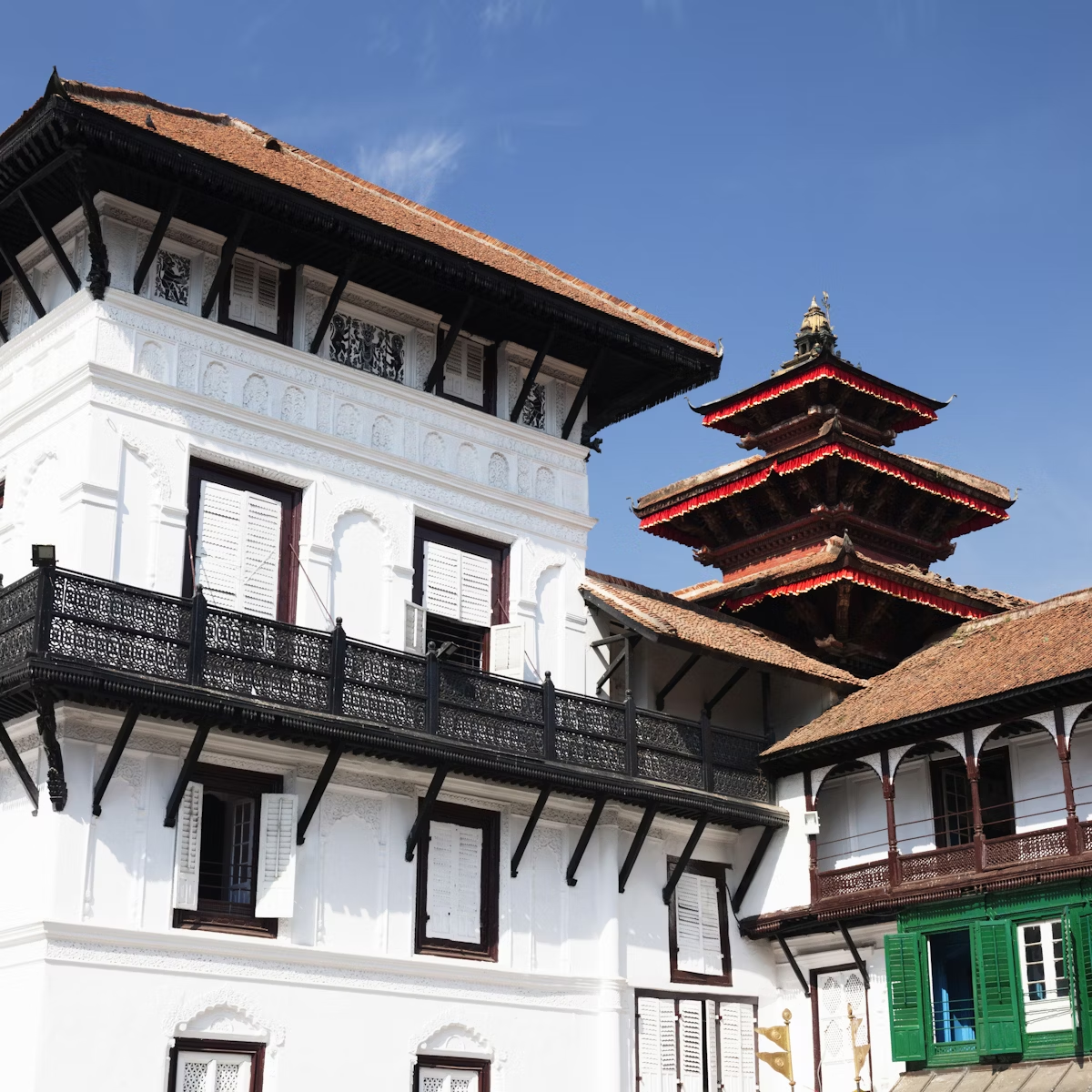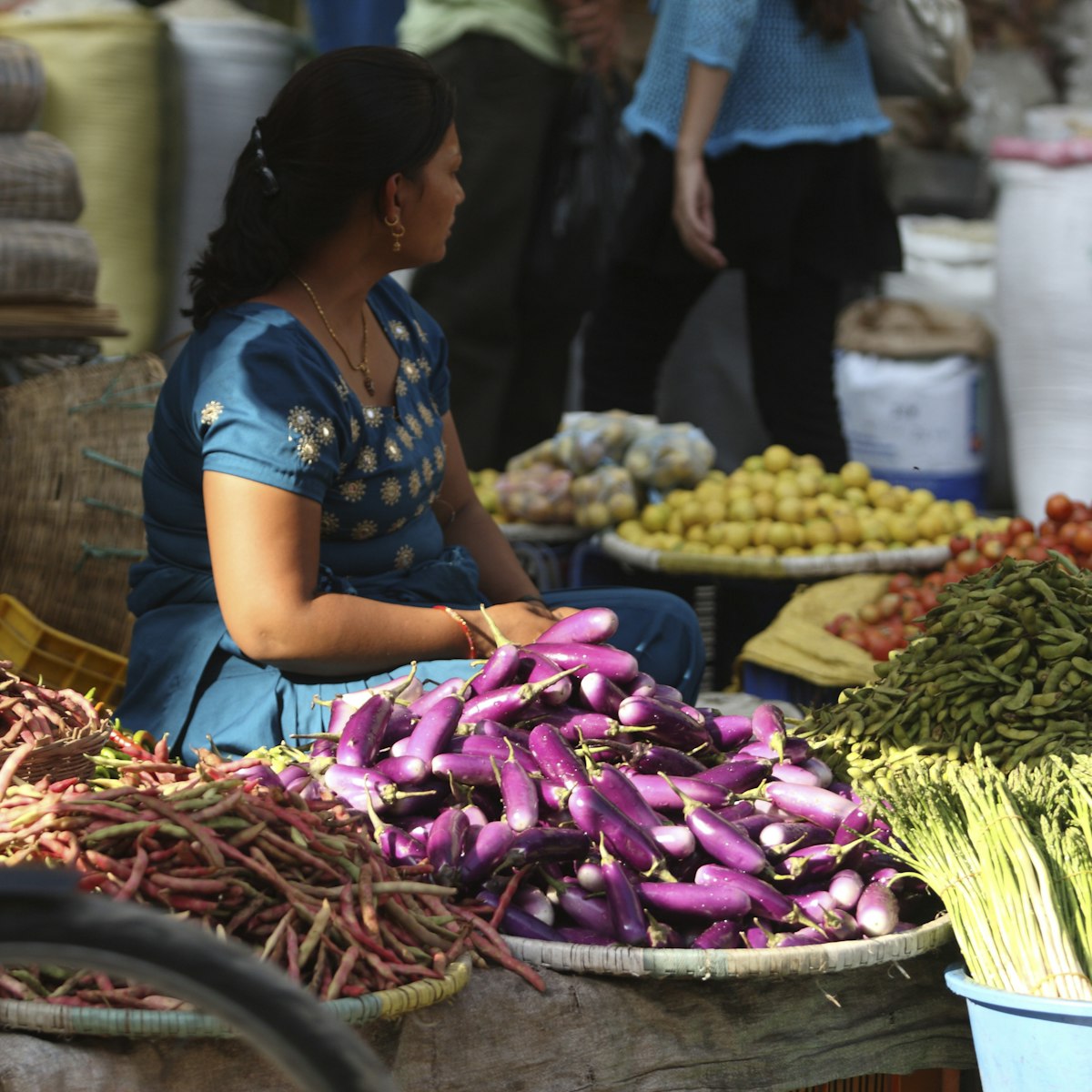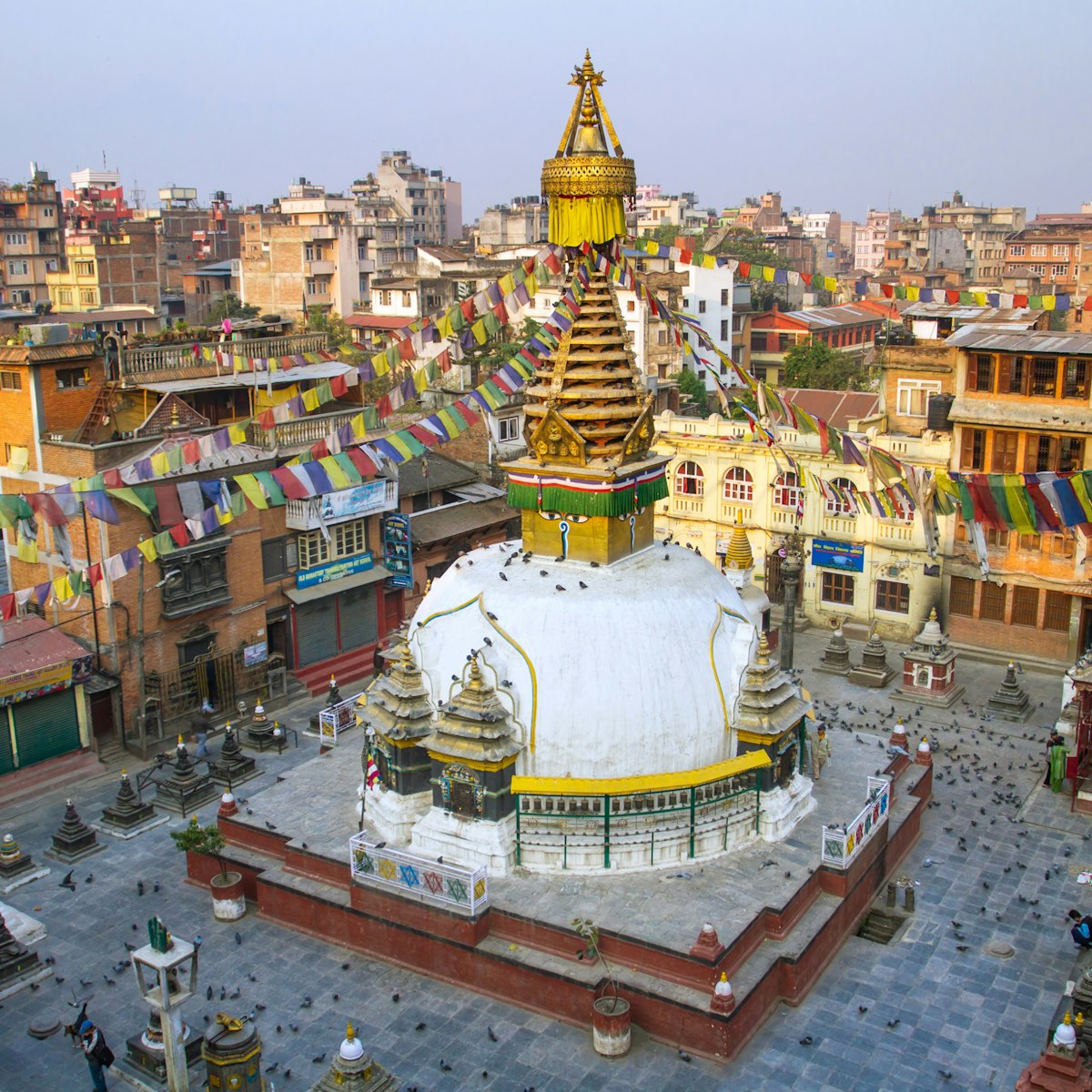
Kathmandu
Kathmandu's royal palace, known as the Hanuman Dhoka, was originally founded during the Licchavi period (4th to 8th centuries AD), but the compound was…

Kathmandu
Kathmandu's royal palace, known as the Hanuman Dhoka, was originally founded during the Licchavi period (4th to 8th centuries AD), but the compound was…

Kathmandu
The long, rectangular courtyard of the Itum Bahal is the largest bahal (Buddhist monastery courtyard) in the old town and remains a haven of tranquillity…

Kathmandu
The beautifully restored Swapna Bagaicha (Garden of Dreams) remains one of the most serene and beautiful enclaves in Kathmandu. It's two minutes' walk and…

Kathmandu
From dawn until dusk the six-spoked junction of Asan Tole is jammed with vegetable and spice vendors selling everything from yak tails to dried fish. It’s…

Kathmandu
The busy street of Makhan Tole spills into Indra Chowk, the courtyard named after the ancient Vedic deity, Indra. Locals crowd around the square’s…

Kathmandu
From the entrance gate of the Hanuman Dhoka palace you immediately enter its most famous chowk. Nasal Chowk was used for coronations, a practice that…

Seto Machhendranath Temple (Jan Bahal)
Kathmandu
Southwest of Asan Tole at the junction known as Kel Tole, this temple attracts both Buddhists and Hindus – Buddhists consider Seto (White) Machhendranath…

Kathmandu
Few things speak clearer to the political changes that have transformed Nepal over the last 15 years than this walled palace at the northern end of Durbar…

Kathmandu
At the junction of Durbar and Basantapur squares, this red-brick, three-storey building is home to the Kumari, the girl who is selected to be the town’s…

Kathmandu
Kathmandu’s Durbar Sq was where the city’s kings were once crowned and legitimised, and from where they ruled (durbar means palace). As such, the square…

Kathmandu
Durbar Sq’s most magnificent temple stands at its northeastern extremity but is not open to the public. Even for Hindus, admission is restricted; they can…

Pachali Bhairab & the Southern Ghats
Kathmandu
The northern banks of the Bagmati River south of the old town are home to several little-visited temples and shrines, as well as the worst urban poverty…

Kathmandu
The most popular Tibetan pilgrimage site in the old town is this lovely stupa, a small copy dating from around 1650 of the great Swayambhunath complex…

Kathmandu
The section of the Hanuman Dhoka palace west of Nasal Chowk, overlooking the main Durbar Sq area, was constructed by the Ranas in the middle to late part…

Kathmandu
At the southern end of the Sikha Narayan Temple square, just across the crossroads on the corner, you will see a lump of wood into which thousands of…

Kathmandu
On the northwest corner of the Gaddhi Baithak, this triple-storey, triple-roofed temple is easily missed because it surmounts the building below it. The…

Kathmandu
Kathmandu owes its name to this ancient building, which was sadly destroyed in the 2015 earthquake.

Kathmandu
Today, all that remains of this 62m-high tower which once loomed over the streets of southern Kathmandu is its fractured brick base. The tower collapsed…

Kathmandu
Directly north of the Taleju Temple is a 10th-century kneeling Garuda statue facing a small Vishnu temple. To the east, in a walled courtyard just past…

Kathmandu
Seto (White) Bhairab’s horrible face is hidden away behind a grille in an earthquake-damaged pavilion opposite King Pratap Malla’s Column. The huge mask…

Kathmandu
North of the Jagannath Temple is the figure of Kala (Black) Bhairab. Bhairab is Shiva in his most fearsome aspect, and this huge stone image of the…

Kathmandu
This large fenced tank just off Kantipath is said to have been built by King Pratap Malla in 1667 to console his queen over the death of their son (who…

Kathmandu
At the top of Maru Tole, surrounded by the rubble of the temples that used to surround it, this tiny golden shrine is one of the four most important…

Kathmandu
Reached through an innocuous entryway to the southwest of the ruined Jaisi Deval platform, this courtyard is named after Ram, an incarnation of Vishnu and…

Kathmandu
Mohankali (Mohan) Chowk, inside the Hanuman Dhoka complex, was once used as a residence by the Malla kings. It's currently closed for post-earthquake…

Kathmandu
Once used to warn the city of impending danger, the Great Drums still stand in a restored pavilion to the north of Hanuman Dhoka. Traditionally, a goat…

Kathmandu
Dominating the eastern side of Durbar Sq, this white neoclassical building lost large chunks of its once elegant facade during the earthquake and is…

Kathmandu
This 17th-century temple was destroyed in the 2015 earthquake. All that remains is the temple's nine-stage ochre platform.

Kathmandu
On your left as you leave the southern part of Durbar Sq along Makhan Tole is the Great Bell. The bell’s ring drives off evil spirits, but it is only rung…

Trailokya Mohan Narayan Temple
Kathmandu
This small five-roofed temple dating from 1680 was completely destroyed in the 2015 earthquake. All that remains is the fine Garuda kneeling before it,…

Kathmandu
This courtyard in the Hanuman Dhoka palace is currently off-limits for post-earthquake reconstruction but should reopen eventually.

Kathmandu
The square stone pillar, known as the Pratap Dhvaja, was previously topped by a famous statue of King Pratap Malla (r 1641–74), looking towards his…

Kathmandu
King Prithvi Narayan Shah ordered the construction of the four red-coloured towers around Lohan Chowk. The towers represent the four ancient cities of the…

Kathmandu
Little is known about this mysterious temple. Even the god to which it is dedicated is controversial – the lingam inside indicates that it is a Shiva…

Kathmandu
The Newari deity Bhimsen is said to watch over traders and artisans, so it’s quite appropriate that the ground floor of this well-kept temple should be…

Kathmandu
Originally built with wood left over from the Kasthamandap Temple, this squat building was called the Silengu Sattal (silengu means ‘left over wood’ and a…

Kathmandu
The octagonal Krishna Temple was built in 1648–49 by Pratap Malla, perhaps as a response to rival Siddhinarsingh’s magnificent Krishna Temple in Patan…

Kathmandu
Halfway between Chhetrapati and Durbar Sq, the Nara Devi Temple is dedicated to Kali, Shiva’s destructive consort. It’s also known as the Seto (White)…

Kathmandu
This old building, jammed between gleaming brass shops just southwest of Asan Tole, looks decrepit at first glance. Look closer and you'll notice some…

Kathmandu
This temple, noted for the erotic carvings on its roof struts, is the oldest structure in this part of Durbar Sq. Pratap Malla claimed to have constructed…